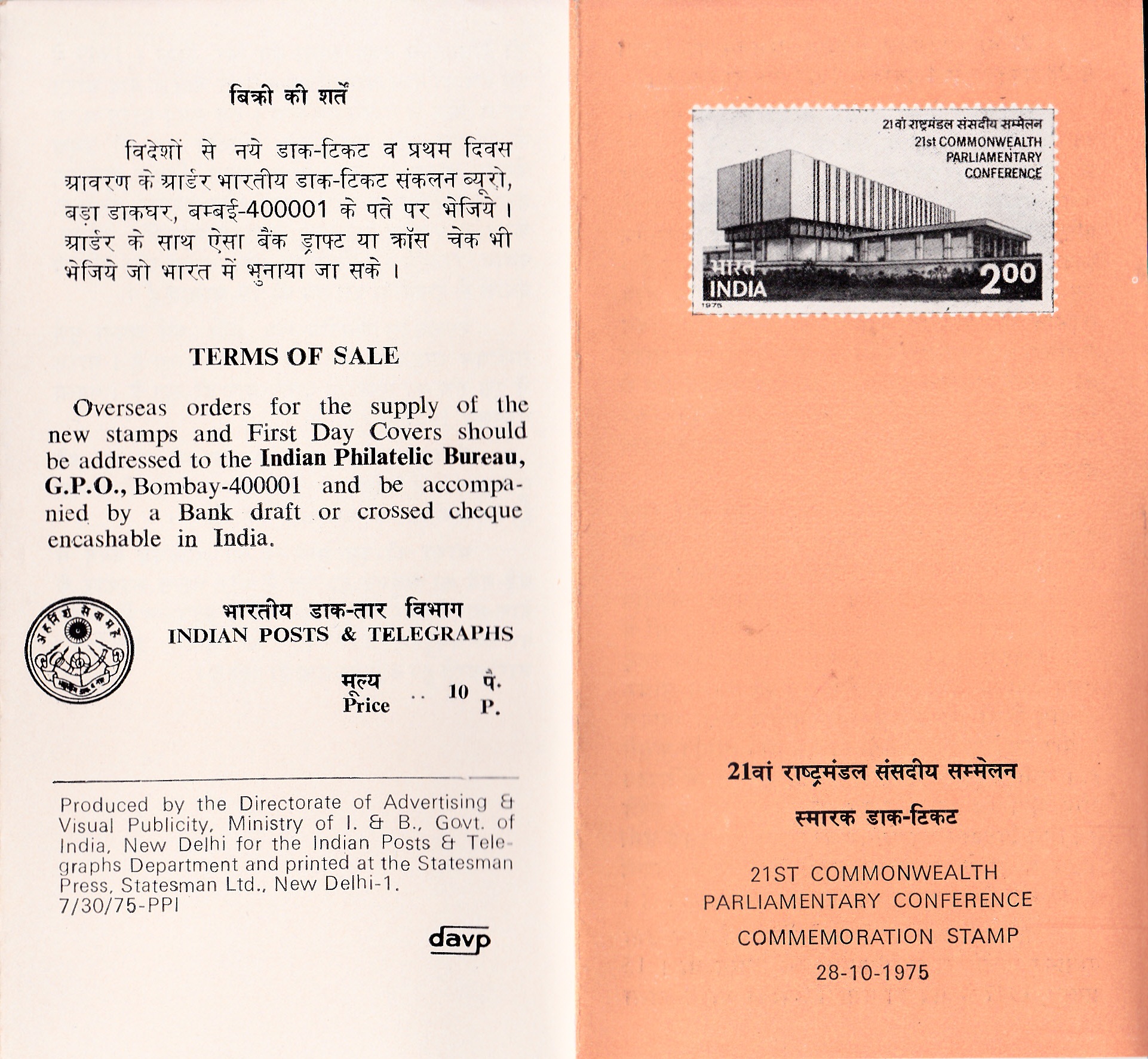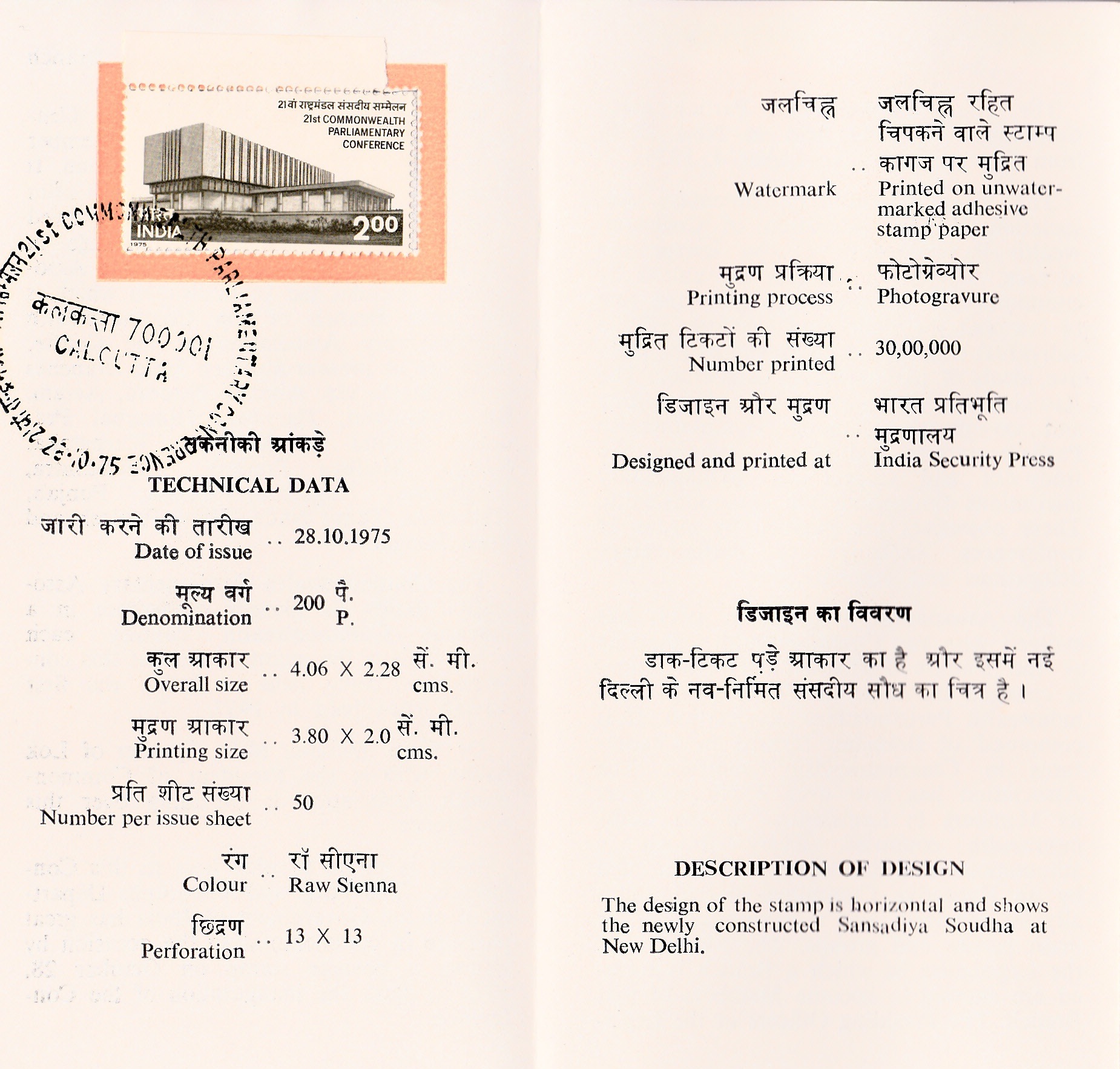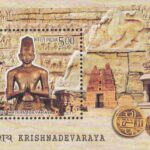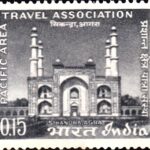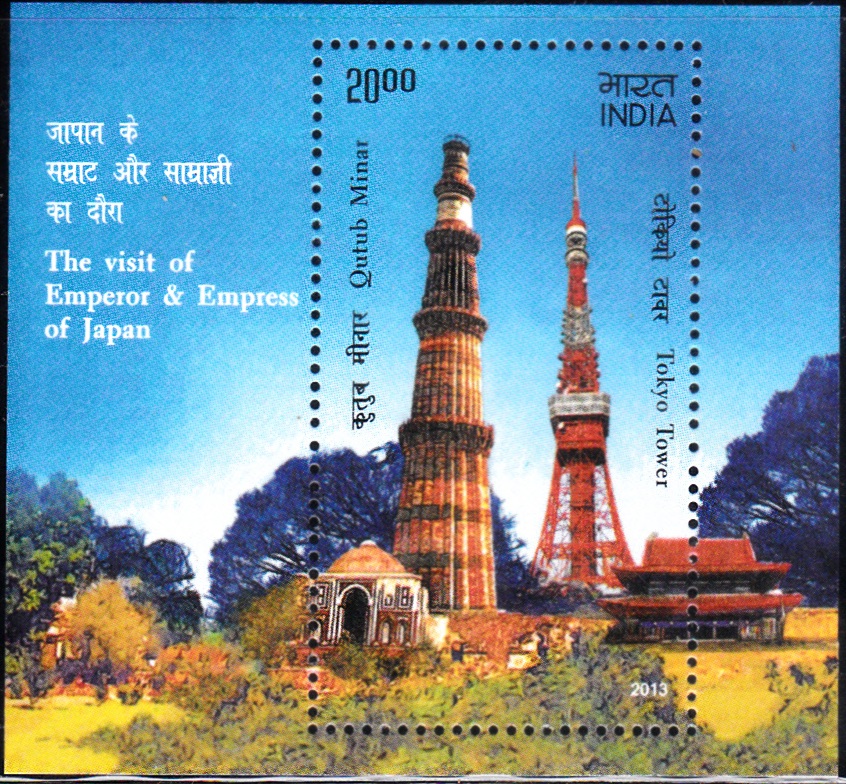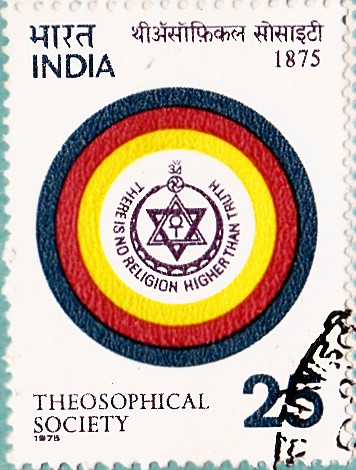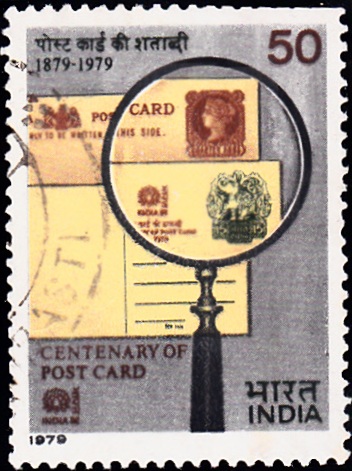
21st Commonwealth Parliamentary Conference, New Delhi
Information Sheet for the Commemorative Postage Stamp on the 21st Commonwealth Parliamentary Conference :
Issued by India
Issued on Oct 28, 1975
Issued for : India is proud to play host to this Conference. The Posts and Telegraph Department of the Government of India has great pleasure in commemorating the occasion by issuing a postage stamp on October 28, 1975 to mark the inauguration of the Conference.
Description of Design : The design of the stamp is horizontal and shows the newly constructed Sansadiya Soudha at New Delhi.
Type : Information Sheet (Brochure) bearing an Adhesive Postage Stamp with First Day Special Cancellation Postmark
Colour : Raw Sienna
Denomination : 200 Paise
Overall size : 4.06 X 2.28 cms.
Printing size : 3.80 X 2.00 cms.
Perforation : 13 x 13
Watermark : Printed on unwatermarked adhesive stamp paper
Number printed : 30,00,000
Numbers per issue sheet : 50
Printing process : Photogravure
Designed and printed at : India Security Press
About :
- The 21st Commonwealth Parliamentary Conference was being held in New Delhi from October 28 to November 4, 1975.
- The Commonwealth Parliamentary Association is an Association of Commonwealth Parliamentarians, who irrespective of race, religion or culture, are united by community of interest, respect for the rule of law and the rights and freedoms of the individual citizen, and by pursuit of the positive ideals of parliamentary democracy. The Association aims to promote understanding and co-operation among Commonwealth Parliamentarians and also to promote the study of and respect for parliamentary institutions throughout the Commonwealth. These objectives are pursued by means of conferences, exchange of Parliamentary delegations and seminars.
- The Association, founded in 1911, has evolved with the Commonwealth. Starting as the Empire Parliamentary Association, it changed its name in 1948 to the Commonwealth Parliamentary Association. It is composed of Branches formed in Legislatures in Commonwealth countries. The Association has now over 90 Branches as its Members in Legislatures of the Commonwealth countries. Every Branch is autonomous and its affairs are controlled by an Executive Committee elected annually by Members and representatives of all main parties and groups. The Members of the Legislature in which a Branch is formed are entitled to become Members of that Branch. The Presiding Officers of the Legislative Chambers are normally the Branch Presidents.
- Prior to India’s independence, the Central Legislative Assembly was a Member of the Empire Parliamentary Association. It ceased to function as the India Branch after August 15, 1947. In 1949, India renewed her membership following the change in the name and the constitution of the Association. Besides the India Branch which is the main Branch of the Commonwealth Parliamentary Association at the Centre, there are at present nineteen State Branches in the States viz. Andhra Pradesh, Assam, Bihar, Gujarat, Haryana, Arunachal Pradesh, Jammu & Kashmir, Karnataka, Kerala, Madhya Pradesh, Maharashtra, Meghalaya, Nagaland, Orissa, Punjab, Rajasthan, Tamil Nadu, Uttar Pradesh and West Bengal.
- The Commonwealth Parliamentary Association holds its plenary conference in a different Commonwealth country each year. This is the second time that this conference was being held in India, the first having been held in 1957.
- Dr. G. S. Dhillon, M.P., Speaker of Lok Sabha who was the President of commonwealth Association is presiding over this conference.


